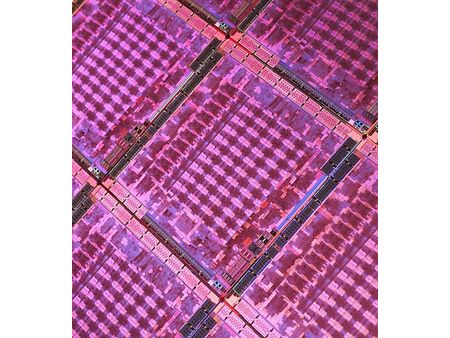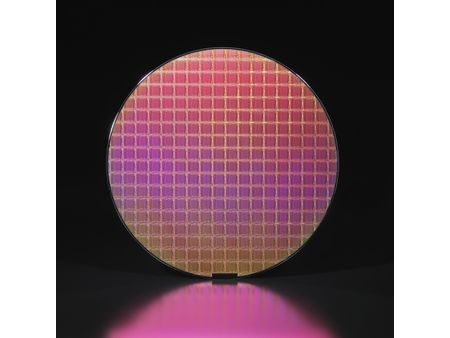ATI Radeon HD 4850: Smarter by Design?
Specifications
Since only the Radeon HD 4850 has been made available for the moment, let’s look at the specifications for that card, along with those of the GeForce 9800 GTX +, which Nvidia has pulled out of its sleeve at the last minute to compete with it (though it won’t be available until July17).
| GPU | HD 3870 X2 | HD 4850 | 9800 GTX | 9800 GTX + | 280 GTX |
|---|---|---|---|---|---|
| GPU frequency | 825 MHz | 625 MHz | 675 MHz | 738 MHz | 602 MHz |
| ALU frequency | 825 MHz | 625 MHz | 1688 MHz | 1836 MHz | 1296 MHz |
| Memory frequency | 900 MHz | 1000 MHz | 1100 MHz | 1100 MHz | 1107 MHz |
| Memory bus width | 2x256 bits | 256 bits | 256 bits | 256 bits | 512 bits |
| Memory type | GDDR3 | GDDR3 | GDDR3 | GDDR3 | GDDR3 |
| Memory quantity | 2 x 512 MB | 512 MB | 512 MB | 512 MB | 1024 MB |
| Number of ALUs | 640 | 800 | 128 | 128 | 240 |
| Number of texture units | 32 | 40 | 64 | 64 | 80 |
| Number of ROPs | 32 | 16 | 16 | 16 | 32 |
| Shading power | 1.06 TFlops | 1 TFlops | (648) GFlops | (705) GFlops | 933 GFlops |
| Memory bandwidth | 115.2 GB/s | 64 GB/s | 70.4 GB/s | 70.4 GB/s | 141.7 GB/s |
| Number of transistors | 1334 million | 956 million | 754 million | 754 million | 1400 million |
| Process | 0.055µ | 0.055µ | 0.065µ | 0.055µ | 0.065µ |
| Die area | 2 x 196 mm² | 260 mm² | 324 mm² | 248 mm² | 576 mm² |
| Generation | 2008 | 2008 | 2008 | 2008 | 2008 |
| Shader Model supported | 4.1 | 4.1 | 4.0 | 4.0 | 4.0 |
When looking at the main characteristics, first of all the 4850 seems to leave the 9800 GTX, or even its + version, no chance – with 27% more transistors, 800 ALUs, and a theoretical processing power of 1 Tflop, or 42% higher, not to mention support for Direct3D 10.1 and a superiority that’s often quite marked in synthetic tests, as we’ve seen. All that is nothing to sneeze at. Yet, due to its keeping a 256-bit memory bus, memory bandwidth remains a little weak. And AMD still has a clear lag in the number of texture units and ROPs, and seems not to have learned from the errors of the past in that department.
Engraved at 55 nm, the RV770 is a relatively small chip at 260 mm², less than half the size of the GT 200. That’s no longer an advantage for AMD, however, with Nvidia catching up with the 9800 GTX +, which introduced the G92b, a G92 engraved at 55 nm and which, according to our measurements, is 5% smaller than the RV770 thanks to its smaller number of transistors. That, by the way, is the main innovation of this card, and it allows a 9% boost in GPU frequency (and ALU frequency). And… that’s all! All the other characteristics (with the possible exception of temperature and power consumption, which we’ll check later) remain identical. We initially wondered why Nvidia hasn’t called the new card "GeForce 9800 Ultra," and that would appear to be the explanation. It remains to be seen whether this new version really deserves to exist, except that it’s always a positive point for the purchaser to be able to distinguish between the two versions of the GPU (which wouldn’t have been possible with a gradual replacement of the 9800 GTX’ GPU).
Finally, note that the 4850 has the same theoretical power as the 3870 X2, but with an architecture that’s slightly improved, as we’ve seen, and other characteristics that are slightly different (in particular more texture units). So it will be particularly interesting to compare these two cards in the tests.
Get Tom's Hardware's best news and in-depth reviews, straight to your inbox.
Current page: Specifications
Prev Page Geometric Performances, PowerPlay Next Page Radeon HD 4850 (David) against 9800 GTX + (Goliath)-
Neog2 Wow $200 in Best Buy for a HD 4850,Reply
$450 in Best Buy for a GTX 260.
And the 4850 is pretty close to the 280.
Ouu the 4870 is going to give Nvidia a run for there money
for the first time in a while. -
Prodromaki Oced Asus and 4850 instead of 4870 + too many games based on engines favoring nVidia...Reply
P.S. +1000 -> 2222 -
For Mass Effect the Engine limits the Maximum framerate to 62FPS. You can change this in the BIOENGINE.INI file (in the Documents\BioWare\Mass Effect\Config\ folder on Vista) by changing the value:Reply
MaxSmoothedFrameRate=62 in the Engine.GameEngine section -
puterpoweruser I can't believe it took nVidia coming out with a new card again to have tom's make a review finally of the 4850.Reply
"it was unavailable due to the sloppy handling of this launch"
Seriously? AMD can't control if their retail partners screwed the pooch on the release date, because they were so anxious to get people this great product. They made sure the product was readily available well before the launch date.
They should be praised for not having a paper launch, not told that it was a sloppy launch, very poor form saying that.
Hell i went to best buy and bought 2 4850's on sunday, when the cards weren't even supposed to be available yet, the guy told me "they have been in stock for over a month in the back, they aren't supposed to be available yet but i can get two for you." Were the AMD police supposed to come and smack best buy on it's hand and keep me from giving them profits?
Sorry if i'm ranting, just put the blame where it belongs. -
Malovane No offense, Fedy Abi-Chahla and Florian Charpentier, and thanks for the hard work, but I think the article should be revised a bit. First off, this should be a review of graphics cards.. not a burned out overclocked Asus motherboard. If you attribute your 4850 test crashing due to your motherboard.. why throw in results of 0 across the board for the 4850? You just corrupted your data and made the final fps averages meaningless, which is the thing people were generally interested in. Secondly, why in the world are you including tests that don't fit the definition of "playable" on any card in your test lineup (Crysis 2560x1600). It just throws off averages, as people aren't going to run this game at 7fps! If there's no card in the lineup that gets close to 30fps in a certain test, just move on! Save it for the quad crossfire or triple sli tests or something. You're giving high weights to resolutions that only a fraction of a percentage point of dedicated gamers can utilize (and those wouldn't bother with a single GPU). Lastly, please get those annoying gigantonormous screenies out of the review. It makes the review look like it was done by kindergarteners.Reply -
puterpoweruser I didn't finish reading the whole article yet but was the driver hotfix and the current 8.6 driver applied to the 4850?? It improved performance and stability greatly as i saw, it make the actual clock speed the card is set it run nicely and gives it great overhead to overclock through the CCCReply -
draxssab Who wants the Radeon 4800 full revew? (including the 4870, that do better than the GTX 280 in some games!)Reply
http://www.hardware.fr/articles/725-8/dossier-amd-radeon-hd-4870-4850.html
In french, but the graphs talk by themselves. Ho, and if you want a short translation = impressive and incredibly more efficient than Nvidia (if you compare the size of the GPU, yes it's A LOT more efficient) -
spaztic7 These reviews are getting better! Although I have seen many benchmarks and tests of the 4850 before this, I still love seeing how the 48x0 line is doing against the green machine! Anandtech.com has a kill 4870 review!Reply

